Brewer's blackbird (Euphagus cyanocephalus) is a medium-sized New World blackbird. It is named after the ornithologist Thomas Mayo Brewer.
Description
Adult males have black plumage with an iridescent purple head and neck and glossy bluish-green highlights on the rest of the body. The feet and legs are black and the eye is bright yellow. The female is brownish-grey with slight hints of the male's iridescence. The female's eye is dark brown, while the male's is bright yellow. Overall, they resemble the eastern member of the same genus, the rusty blackbird; Brewer's blackbird, however, has a shorter bill and the male's head is iridescent purple.[2] This bird is often mistaken for the common grackle but has a shorter tail. The call is a sharp check which is also distinguishable. This bird is in a different family from the Eurasian blackbird.
| Standard Measurements[3][4] | |
|---|---|
| length | 8–10.3 in (200–260 mm) |
| weight | 63 g (2.2 oz) |
| wingspan | 15.5 in (390 mm) |
| wing | 121–133 mm (4.8–5.2 in) |
| tail | 95–102.5 mm (3.74–4.04 in) |
| culmen | 20.4–24 mm (0.80–0.94 in) |
| tarsus | 29.5–33.5 mm (1.16–1.32 in) |
Habitat
Their breeding habitat is open and semi-open areas, often near water, across central and western North America. They are also very common in parking lots or around schools, and easily acclimate to the presence of people.[5] They can live in low elevation, as low as below sea level in Southern California, and elevation as high as 8,000 feet. They are capable of surviving in diverse environments, including marshlands and forests. [6]
These birds are often permanent residents in the west. Other birds migrate to the Southeastern United States and Mexico in Spring. The range of this bird has been expanding east in the Great Lakes region.[7][5] They've expanded their habitat as recently as the 20th century.[5]
Behavior
When Brewer's blackbirds identify threats, such as hawks or even humans, they dive towards them and omit an alarm call. Sometimes, when particularly threatened, they will use physical force on predators.[6]
Brewer's blackbirds often walk along the ground. They can be seen making jerking motions with their heads. In colder months, these birds tend to flock together and forage. Sometimes, other species of blackbirds will join these flocks. During nesting season, their foraging behavior becomes more independent. Brewer's blackbirds have been seen cleverly following vehicles plowing fields, eating the churned up insects.[5]
Feeding
They forage in shallow water or in fields, mainly eating seeds and insects, some berries. They sometimes catch insects in flight. They feed in flocks outside of the breeding season, sometimes with other blackbirds.[5] In marshy areas, they are known to stand on aquatic plants and wade in shallow water to catch insects. Some have even been known to eat smaller mammals, amphibians, and the nestlings of other birds.[6][5]
Reproduction
These birds have mates but the mates don't stay together all year round. The same pair tends to reunite for mating season[6] and both parents take a role in feeding.[5] During mating, male Brewer's blackbirds will puff up their feathers while simultaneously spreading out their wings and tail to look as large as possible. They will point their beak out forward.[5] Their clutch size can vary, usually between 3–7.[5] Eggs are usually a tan color with darker speckles throughout to allow for camouflage.[8] The female bird primarily incubates for 12–14 days.[5] The chicks leave the nest only 2 weeks after hatching.[5]
Nests are not built in isolation, but in colonies of up to 30 pairs.[5] Pairs prefer to nest in areas that are around 20–40' in treetops. However, colonies that live near water may also nest in reeds and other freshwater plants.[6] Nests are made from nearby material such as reeds, sticks and hair. They are built by the female in a cup-like shape and are bonded with mud or other securing substances.[6] The color of the nest usually matches the coloration of the eggs and the surrounding environment as it is crucial to survival.[9] Brewer's blackbird chicks do not immediately open their eyes upon hatching and do not hatch with feathers.[6]
Protected status
Brewer's blackbird (Euphagus cyanocephalus) is protected in the United States under the Migratory Bird Treaty Act of 1918,[10] however exceptions are granted under 50 CFR part 21 (2014) [11] for animals committing or about to commit depredations upon ornamental or shade trees, agricultural crops, livestock, or wildlife, or when concentrated in such numbers and manner that they are a health hazard or other nuisance. They are moderately threatened by climate change. However, this could change if temperatures continue to rise. If temperatures rise by 3 degrees celsius, they could lose 30% of their range. Heat and wildfires are particularly threatening.[5] Their numbers have dropped 57% from 1966 to 2019.[12] It is estimated that there are currently 23 million Brewer's blackbirds in the wild.[13]
Gallery
-
E. cyanocephalus male
-
E. cyanocephalus female
-
The iridescent purple head of the male is a distinguishing feature.
-
Male, Nevada, US
-
Male, Oregon, US
-
Female calling
-
Brewer's blackbird calling
References
- ^ BirdLife International (2016). "Euphagus cyanocephalus". IUCN Red List of Threatened Species. 2016: e.T22724332A94861418. doi:10.2305/IUCN.UK.2016-3.RLTS.T22724332A94861418.en. Retrieved 13 November 2021.
- ^ Peterson, Roger Tory; Peterson, Virginia Marie (2002). Birds of Eastern and Central North America (5th ed.). New York, NY: Houghton Mifflin. p. 310. ISBN 0-395-74047-9.
- ^ Godfrey, W. Earl (1966). The Birds of Canada. Ottawa: National Museum of Canada. p. 359.
- ^ Sibley, David Allen (2000). The Sibley Guide to Birds. New York: Knopf. p. 514. ISBN 0-679-45122-6.
- ^ a b c d e f g h i j k l m "Brewer's Blackbird". Audubon. 13 November 2014. Retrieved 23 October 2022.
- ^ a b c d e f g "Brewer's Blackbird Life History, All About Birds, Cornell Lab of Ornithology". www.allaboutbirds.org. Retrieved 23 October 2023.
- ^ Stepney, P.H.R.; Power, Dennis M. (December 1973). "Analysis of the Eastward Breeding Expansion of Brewer's Blackbird Plus General Aspects of Avian Expansions" (PDF). The Wilson Bulletin. 85 (4): 452–464.
- ^ Balph, Martha Hatch (1975). "Development of Young Brewer's Blackbirds". The Wilson Bulletin. 87 (2): 207–230. ISSN 0043-5643. JSTOR 4160619.
- ^ Westmoreland, David; A. Kiltie, Richard (November 2007). "Egg coloration and selection for crypsis in open-nesting blackbirds". Journal of Avian Biology. 38 (6): 682–689. doi:10.1111/j.2007.0908-8857.04066.x.
- ^ "List of Migratory Bird Species Protected by the Migratory Bird Treaty Act as of December 2, 2013". US Fish & Wildlife Service.
- ^ "Migratory Bird Permits; Removal of Yellow-billed Magpie and Other Revisions to Depredation Order" (PDF). Federal Register. 79 (214): 65595–65602. Archived from the original (PDF) on 18 July 2017. Retrieved 17 May 2018.
- ^ "BBS - About - USGS Patuxent Wildlife Research Center". www.pwrc.usgs.gov. Retrieved 23 October 2023.
- ^ "Avian Conservation Assessment Database Scores – Partners in Flight Databases". Retrieved 23 October 2023.
External links
- "Brewer's Blackbird". All About Birds. Cornell Lab of Ornithology.
- "Brewer's Blackbird Euphagus cyanocephalus". Eastern Ecological Science Center. USGS.
- BirdLife species factsheet for Euphagus cyanocephalus
- Explore Species: Brewer's blackbird at eBird (Cornell Lab of Ornithology)
- Brewer's blackbird photo gallery at VIREO (Drexel University)
- Audio recordings of Brewer's blackbird on Xeno-canto.
|
Help
|
|
Browse
|
Search
|
Create the page "Brewer's Blackbird" on this wiki!
- 4.0 Creative Commons Attribution-Share Alike 4.0 truetrue English Brewer's blackbird in Crissy Field, San Francisco author name string: Rhododendrites...(3,658 × 2,981 (5.44 MB)) - 21:11, 5 March 2024
- 4.0 Creative Commons Attribution-Share Alike 4.0 truetrue English Brewer's Blackbird male, Malheur National Wildlife Refuge author name string: Vickie...(3,350 × 2,328 (5.39 MB)) - 01:36, 21 December 2023
- 4.0 Creative Commons Attribution-Share Alike 4.0 truetrue English Brewer's Blackbird male author name string: Vickie J Anderson Wikimedia username: VJAnderson...(1,793 × 1,279 (1.24 MB)) - 01:36, 21 December 2023
- 4.0 Creative Commons Attribution-Share Alike 4.0 truetrue English Brewer's Blackbird male author name string: Vickie J Anderson Wikimedia username: VJAnderson...(3,502 × 2,526 (5.41 MB)) - 01:36, 21 December 2023
- File:FBB1252-crop.jpg (category Female Brewer's Blackbird, Brewer's Blackbird)work, hereby publish it under the following license: English Female Brewer's Blackbird object has role: photographer author name string: Pat Hansen Wikimedia...(3,085 × 2,052 (933 KB)) - 12:09, 22 August 2023
- File:BB5196-crop.jpg (category Brewer's Blackbird)this work, hereby publish it under the following license: English Brewer's Blackbird author name string: Pat Hansen Wikimedia username: Pathgreen URL:...(3,874 × 2,916 (2.22 MB)) - 04:49, 9 October 2023
- wikidata 'Brewer's Blackbird'] English: Brewer's Blackbird العربية: شحرور بريور, شُحرُور بريور مصرى: شحرور بريور català: quíscal de Brewer čeština: vlhovec...1 KB (202 words) - 22:44, 12 November 2015
- Description: Brewer's Blackbird (Euphagus cyanocephalus) Creator: Lee Karney URL: Fish and Wildlife Service...(1,050 × 701 (994 KB)) - 19:07, 6 December 2014
- {{Information |Description={{en|1=Distribution map of [[:en:Brewer's Blackbird|Brewer's Blackbird]]. Green: year-round, yellow: breeding, blue: wintering...(288 × 375 (46 KB)) - 06:49, 19 February 2024
- DescriptionBrewer's blackbird by Crissy Field (16898).webm English: A chatty Brewer's blackbird sitting on a post by Crissy Field in San Francisco. Polski:...(WebM VP9/Opus video file, 1 min 22 s) - 15:14, 12 May 2024
- DescriptionBrewer's blackbird (48114521691).jpg Brewer's blackbird Date 14 June 2019, 10:36 Source Brewer's blackbird Author Melissa McMasters from Memphis...(5,760 × 3,840 (1.32 MB)) - 13:25, 21 June 2024
- DescriptionBrewer's blackbird (48114381816).jpg Brewer's blackbird Date 13 June 2019, 20:25 Source Brewer's blackbird Author Melissa McMasters from Memphis...(5,760 × 3,840 (1.7 MB)) - 01:38, 21 December 2023
- DescriptionBrewer's Blackbird (15390899768).jpg Brewer's Blackbird Date 6 October 2014, 15:22 Source Brewer's Blackbird Author Tony Hisgett from Birmingham...(2,107 × 2,039 (2.17 MB)) - 01:36, 21 December 2023
- DescriptionBrewer's blackbird (48081275338).jpg Brewer's blackbird Date 7 June 2019, 16:10 Source Brewer's blackbird Author Melissa McMasters from Memphis...(5,760 × 3,840 (973 KB)) - 01:38, 21 December 2023
- DescriptionBrewer's blackbird (39205715411).jpg Brewer's blackbird Date 13 December 2017, 19:10 Source Brewer's blackbird Author Melissa McMasters from...(5,760 × 3,840 (1.91 MB)) - 01:38, 21 December 2023
- DescriptionBrewer's Blackbird (32211706155).jpg B.K. Leach 11/5/16 Date 9 January 2017, 08:50 Source Brewer's Blackbird Author Andy Reago & Chrissy McClarren...(1,920 × 1,080 (811 KB)) - 01:36, 21 December 2023
- DescriptionBrewer's Blackbird (8110902769).jpg Riverlands Migratory Bird Sanctuary in Alton Missouri on 10/21/12 Date 21 October 2012, 17:55 Source Brewer's Blackbird...(1,920 × 1,080 (196 KB)) - 12:35, 8 May 2024
- DescriptionBrewer's blackbird (39546108881).jpg Brewer's blackbird Date 6 January 2018, 11:26 Source Brewer's blackbird Author Melissa McMasters from Memphis...(2,981 × 1,987 (791 KB)) - 09:29, 20 June 2024
- DescriptionBrewer's Blackbird - female.jpg Female Brewer's Blackbird (Euphagus cyanocephalus) in Morro Bay, CA 14dec2007 Friday 14 Dec. 2007 - Photo by...(2,584 × 3,230 (5.72 MB)) - 09:08, 21 June 2024
- seen all over Canmore where the Rockies meet the prairies... Males are jet black. Date 2 June 2006, 22:54 Source Brewer's Blackbird Author Thomas Quine...(1,579 × 958 (1.41 MB)) - 06:03, 10 July 2024








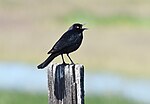
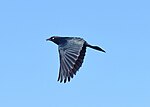
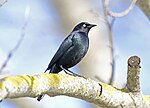
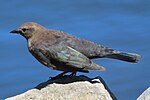

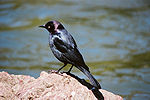






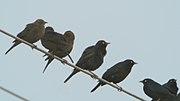
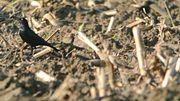



Recent Comments